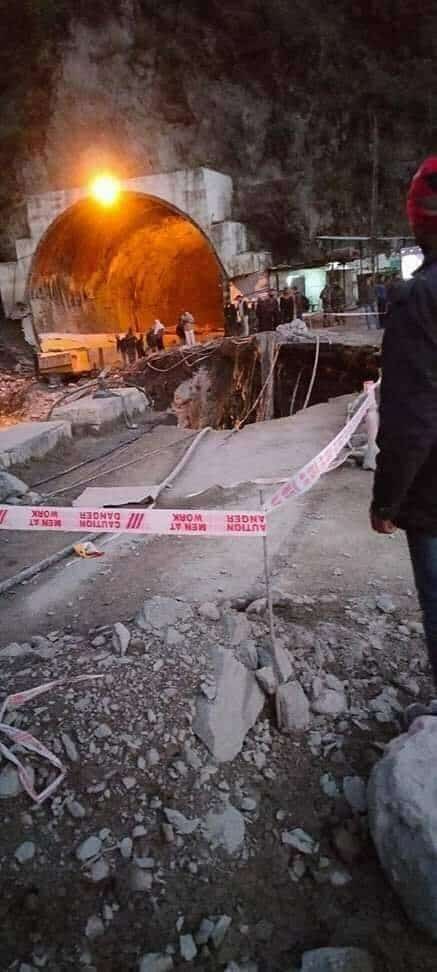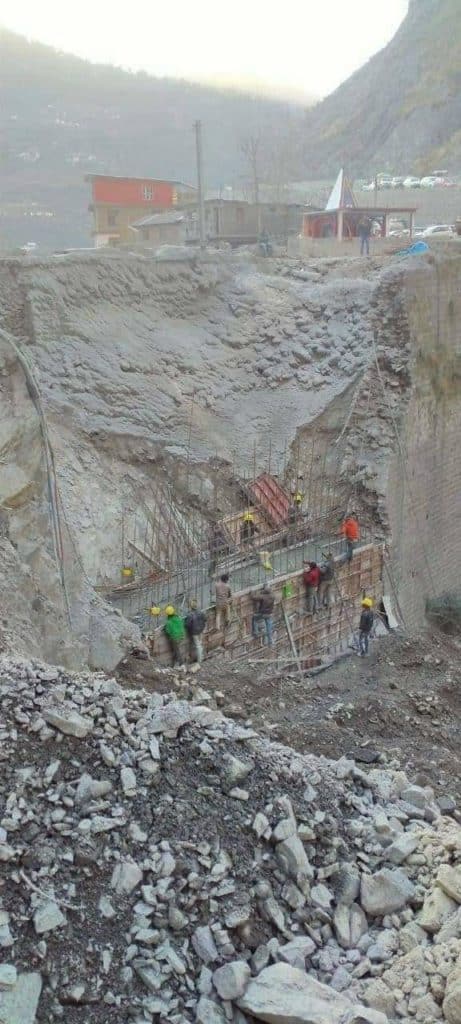Kashmiris struggle with shortage of essential items in Srinagar after closure of Jammu-Srinagar National Highway
“At some point of time, we may die of starvation and the sole reason will be this road link.”
Muhammad Sultan, a fruit seller who plies his trade at the busy Lal Chowk in the heart of Srinagar city, could be forgiven his dire prediction.
But he is only one of many whose livelihoods have been seriously impacted by the closure of the 300-kilomtre Jammu-Srinagar Highway, the only road link that connects the Valley to the rest of India and a lifeline for over 6.5 million people.
Many Srinagar residents, especially those whose livelihoods depend on a regular supply of poultry and mutton, are in the same situation.
“We have been hearing tall claims from successive regimes that a four-lane highway would come up and that it would be all-weather,” said Abdur Rashid, a mutton dealer from Qamarwari area of Srinagar.
“But even after a decade, four-laning remains a distant dream. Normally, I get 100 odd sheep and goat every week that I sell to mutton sellers across Srinagar. The highway closure has choked our economy badly.” (Rashid spoke to Citizen Matters on 15 January. The highway was closed on 9 January).
Closure of this lifeline is not new to citizens of the Valley. Snowfall, landslides, flooding have, over the years, regularly shut down this vital link. But usually for a few days only.
What is different this time, and what is causing fear of a shortage of essential commodities in the Valley, is that this road is likely to remain closed till March as a vital bridge has collapsed which will take time to repair.
Srinagar is totally dependent on supplies of essentials such as petroleum, LPG, kerosene, vegetables, poultry and mutton, as well as other grocery items, from outside via this road.
Srinagar's poultry industry hit badly
People of the Valley are voracious mutton eaters. As per the data available with the Srinagar department of animal husbandry, 85 percent of Kashmiri people are non-vegetarian and consume 51,000 tons of mutton a year and spend Rs 1,200 crore.
Srinagar tops the list at 2,200 tons. Nearly half of this mutton supply, around 25,000 tons, comes from outside, mainly Rajasthan and New Delhi.
Apart from mutton, chicks, broilers and eggs amounting to Rs 1.2 billion are imported each year into the Valley. Adding to the shortage of both supply and demand now is the bird flu scare, which in turn has hit the livelihoods of those in the poultry industry in Srinagar badly.
“Two trucks laden with chicken and eggs were stranded in Jammu in view of the highway closure,” said Aiaz Ahmed Dar, a poultry dealer of Batamaloo area of Srinagar. “This highway should be closed and an alternative road should come up instead.”
The bridge at Kela Morh in Ramban district caved in on 9 January. This forced authorities to close the highway for all traffic for at least 10 days. Within a few days of the closure, Srinagar markets witnessed shortage and black marketing of essentials such as LPG, vegetables, petroleum, mutton and poultry even though the Kashmir administration claimed that it had essential items stocked for two months.
This Srinagar-Jammu highway was built in 1926 by the erstwhile Dogra ruler Hari Singh for transporting him, his family and the royal court to Jammu, the state’s winter capital. It is considered one of the most treacherous in the world as it has been carved out of the hard Pir Panjal mountain range.
A tunnel named Jawahar Tunnel was built in the 1950s cutting through the mountains, but talk of widening the road and making it an all-weather highway has remained just talk.
The highway’s most treacherous portion is the 24-kilometre stretch from Ramban town to Ramsoo village where dangerous curves, landslides, stones, slippery conditions and gushing seasonal streams threaten the careless traveller.
How people cope
Politics. The pandemic. Militancy. The valley people have been coping with lockdowns, curfews and loss of livelihoods and shortage of essential items since August 2019. But the highway remained open through all this.
The present natural calamity which will close the highway for two months means the people have to return to to their traditional habits: stocking pulses, cereals, dried vegetables and various varieties of dried fish, to see them through till the highway opens.
But it is the sudden cut off of LPG and Kerosene supply that is pinching the most. “In Srinagar, even the poorest family has at least one LPG cylinder,” said Imtiyaz Ahmed, a Srinagar-based social worker.
“There is a severe shortage of LPG cylinders due to the highway closure. So the only option was for people to get back to traditional means of cooking by using wood as fuel.”
The effects of the present closure, however, has been made worse by the intense cold and unprecedented snowfall in Srinagar and the Valley as a whole. Especially, as many homes have done away with the traditional hearth for cooking.
“We made several calls to the dealer, but he cited slippery conditions and snow accumulation on roads as a reason for not delivering the gas cylinder,” said Raja Begum, who lives in Nishat area of Srinagar. “There was snow all around and our kitchen is modern with no place for hearths. My husband made a temporary shed under which I made a temporary hearth to cook meals.”
For Fehmeeda, a housewife who lives in Lawaypora area of Srinagar outskirts, highway closure coupled with snowfall brings a lot of problems.
“My husband is an auto-driver and we are a family of four including three daughters to feed,” says Fehmeeda. “We have a kerosene stove to cook, but the government gives only 1.5 litres of kerosene per family a month. Cooking meals on a hearth is the only choice for me amid this biting cold. Highway closure brings other problems too: for example, we don’t get fresh vegetables, mutton and poultry vanishes. Families like us can’t afford to buy vegetables at exorbitant rates.”
For instance, the cost of potatoes and tomatoes. which were selling at Rs 40 per kg each, doubled soon after the road was closed.
Temporary bridge
Meanwhile, The National Highways Authorities of India (NHAI) roped in the Border Roads Organisation to lay a temporary bailey bridge across the river. A task the BRO completed in a record time of two days on 17 January. A trial run was carried out successfully on the evening of 17 January and light motor vehicles (LMVs) are now allowed to ply over the 110-feet long iron bridge.
“But this is only a temporary arrangement,” said Additional Director General of Traffic (ADGP) Traffic J&K, T Namgyal. “The tentative deadline for repairing the damaged portion of the road is first week of March.”
“This bridge can’t bear more than 40 tons of weight at a time,” said Chief Engineer BRO (J&K) Brigadier I K Jaggi. “The traffic department will need to be extra cautious while allowing essential supplies laden trucks to ply over the bridge.”
To begin with, 500 essential commodities laden vehicles carrying petrol, mutton, LPG, Kerosene entered Srinagar on the morning of 17 January. And supplies, though in much smaller numbers than earlier, are now coming through.
But a more permanent solution to this problem of sudden closure of the highway seems many years off. Till then, the solution will have to be traffic management. “Presently, there is only one-way traffic a day: Srinagar to Jammu on first day of the week and vice-versa on the second day,” according to Divisional Commissioner Kashmir P K Pole.
Alternative routes
Previous regimes had claimed that the old Mughal Road that connects Kashmir with Rajouri district of Jammu was a viable alternative to the Srinagar-Jammu highway. The road was thrown open for traffic in 2010 after necessary reconstruction.
However, the delay in construction of a nine kilometre tunnel between Zaznar and Chattapani has held up completion of this project. At present, there is huge snow accumulation on the road stretch that starts from South Kashmir’s Shopian district.
As the name suggests, this road was used by Mughal kings who ruled Kashmir from time to time to shift their base to Jammu district during winters and back to the valley in summer. “We have been hearing about construction of this tunnel on Mughal Road since 2010,” said Jehangeer Ahmed, a social activist in Shopian district. “Had the tunnel been constructed, we would not have been dependent on Srinagar-Jammu highway.”
The planned Srinagar-Jammu Rail link too is nowhere near completion. Railway officials say two sections of rail link are operational: Udhampur-Katra in Jammu and Baramulla to Banihal in Kashmir. “In between, there is a 111-kilometre section that is likely to be completed by January 2023,” said a northern railway official. “However, laying the railway track here is a difficult task, given the rough terrain, ravines, and slopes.”
This article was first published in Citizen Matters, a civic media website and is republished here with permission. (c) Oorvani Foundation/Open Media Initiative
from Firstpost India Latest News https://ift.tt/2KN6JPo



Comments
Post a Comment